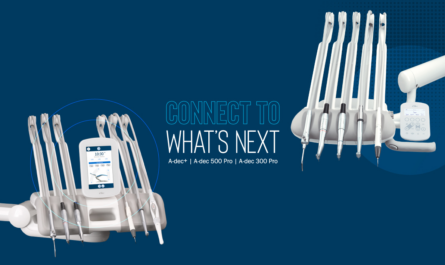Some trends to keep an eye on as you formulate your plan for next year.
By Nick Partridge
Prognostication is a tricky business. Pollsters are under fire for their inaccurate results this election season … and who could have possibly predicted what 2020 had in store for us?
While we cannot know the future, there is of course tremendous value in thinking about and preparing for it. Most organizations undertake an annual planning effort to allow for an examination of the business while preparing a plan for the road ahead. As a result, we endeavor to help guide you in your annual planning process, highlighting emerging trends and anticipating new ones. Therefore, here are my bold predictions for 2021.
Dental networks will shrink
I believe dental networks will be smaller in 2021 for a variety of reasons. Dental networks experienced record growth on the advent of network leasing. The result is dental networks now look very similar. There is significant overlap as the average provider is now in over 9 networks. Moving forward, payers will be focusing on improving their networks to be more cost effective.
Dental networks’ focus on becoming more cost-effective will force dental practices to make decisions about insurance participation. More active efforts to maintain or even reduce reimbursements frustrate providers still grappling with staffing turnover as a result of the shutdown in addition to reductions in capacity and demand. Plus, while nearly all PPE reimbursement programs have ended, dental practices are absorbing the ongoing costs to protect patients and staff within new PPE guidelines. Recognizing the overlapping nature of networks and facing these financial realities, dentists will likely shed participation in some plans.
Suppression
As mentioned above, payers are focusing on building more cost-effective networks. One of the primary ways to accomplish this, is to exercise discretion in picking up providers through leased networks. As network leasing proliferated over the last 5-6 years, providers were largely certain to be picked up through partnerships. Thus, while enduring some indigestion to make contracting changes, the outcome was usually worth the effort. This effort to selectively restrict access is called suppression. Providers while available through a leased partnership will be actively suppressed from accessing that network based on criteria like cost and claims history.
Suppression stands to create tremendous problems for practices with meaningful provider turnover as new providers become contracted differently from existing providers. Certain providers may be picked up through partners while others may not and the criteria for such decisions is proprietary and confidential. Contracting inconsistencies are problematic in building strong patient relationships as the cost of care for patients differs by treating provider. At the same time, providers should not acquiesce by accepting lower reimbursement rates.
Your team and your strategy matter more than ever
As payers methodically enhance their networks with cost-effective providers, each insurance company will likely approach this challenge differently to meet the needs of their clients. In addition, at least four networks are in the process of building a national footprint. These networks represent new opportunities. With varying approaches and new opportunities, navigating the insurance landscape requires active management. For example, teams tasked with case presentation, payment posting or other revenue cycle functions will need to be organized and communicative about contracting inconsistencies between providers and fee schedule differences between offices.
As part of the annual planning process, revenue cycle teams should be evaluating participation decisions, fee schedules and contracting inconsistencies to improve the patient experience, reduce administrative effort and ultimately to help formulate priorities in negotiations with payers.
Likewise, these considerations should be part of the integration of new practice acquisitions. More than ever, dental groups are going to need to be strategic about their insurance participation.
DSOs will continue to steal market share
The good news for DSOs is that through 2020, patients have increasingly migrated to affiliated practices. DSOs are taking market share in an environment where patient visits have not returned to pre-COVID levels. We expect this trend to continue. Practices that experienced turnover or were closed completely during the shutdown are at a greater risk for losing patients. Patients looking for new dental homes as a result of job loss, might also be looking for more cost-effective options and/or for in-network providers. With the benefits of scale and investments in technology, I believe DSOs are well-positioned to compete for patients in 2021.
Delta Dental has peaked
There, I said it. In 10 years, when we look back … I believe 2019/2020 will be the apex of Delta Dental as an association of 39 independent companies. I believe Delta is facing major headwinds that will require meaningful change. Many Delta plans have worked to eliminate a provider’s ability to participate exclusively in their flagship Premier network with better reimbursements. This has forced providers into the PPO network with generally lower rates. Secondly, in many states, Delta has kept rates constant for most of the last decade where in others Delta has worked to actively reduce rates. Collectively these efforts have eroded goodwill and pushed Delta to the breaking point for many practices. Add in the class action lawsuit and I think they will slowly lose their ranking as the top dental network unless changes are made.
Regardless of the accuracy of my bold predictions, the business of dentistry will be increasingly important in 2021 and beyond. Have a safe and happy holidays and best wishes for 2021.





